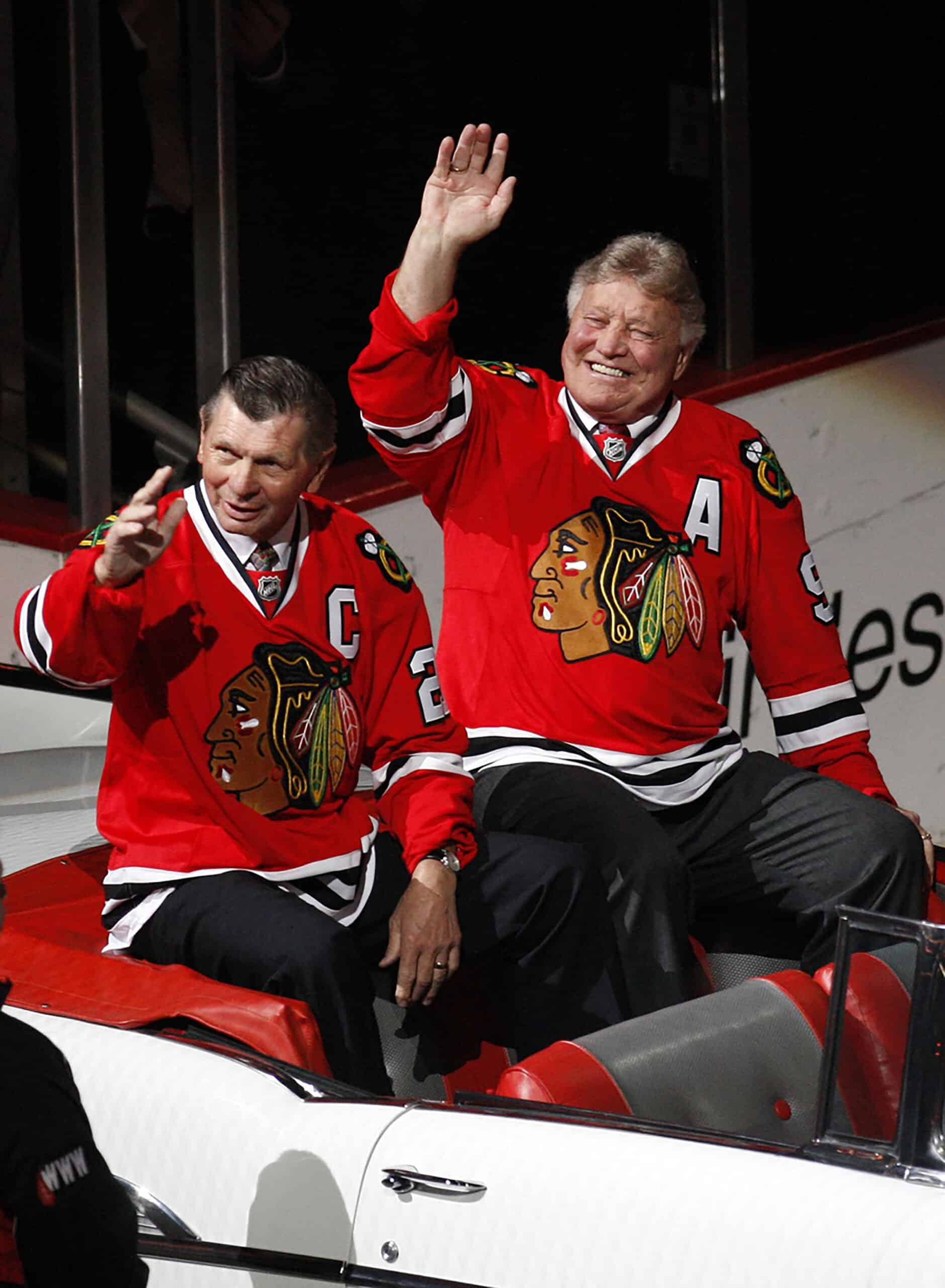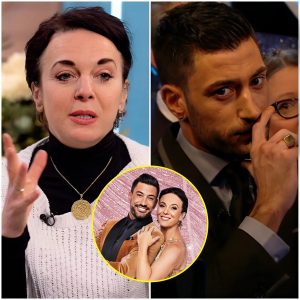The Chicago Blackhawks have been competing in the National Hockey League since the 1926-27 season. The most recent decade was the best in the team’s history as the Blackhawks doubled the number of Stanley Cups. They had three going into the 2010s, and they raised their total to six with triumphs over the Philadelphia Flyers, Boston Bruins and Tampa Bay Lightning.

It would seem quite obvious that the leaders of those most recent Stanley Cup champions would find their way into the ranking of the top 10 players in franchise history. Patrick Kane, Jonathan Toews and Duncan Keith all have their spots in the rankings, but the best player in franchise history was the legendary Golden Jet, Bobby Hull.
Bobby Hull was a breathtaking sight with the puck on his stick, No. 1
It took Bobby Hull two years to find his stride in the NHL, but once he did, he became one of the greatest goal-scoring machines the game has ever seen. After starting his career with seasons of 13 and 18 goals, Hull rolled up his sleeves and started to dominate. He scored a league-high 39 goals in 1959-60 and would reach the 50-goal mark two years later. He would score 50 or more four times with the Blackhawks and then reach that level four more times when he left Chicago for the Winnipeg Jets of the World Hockey Association.
His decision to leave Chicago hurt the franchise badly, but Blackhawks ownership would not come close to matching the $1 million signing bonus he received from the Jets. Most Blackhawks fans understood and put the blame for his departure on owner Bill Wirtz.
His messy exit aside, Hull was a fan favorite in Chicago. He was one of the fastest skaters in the league and when he delivered one of his patented end-to-end rushes, the fans would stand up to get a glimpse of his speed and power. He would either take the puck all the way to the net or wind up for a huge slap shot, which was the hardest in the league during his 15 years in Chicago from 1958-59 through 1971-72.
The Hall of Famer played 1,036 games for the Blackhawks and scored 604 goals and added 549 assists for 1,153 points. He scored 4 goals and 10 assists in the 1961 playoffs that saw the Blackhawks take home the Stanley Cup. He was a dominant postseason figure, scoring 62 goals and 129 points in 116 Stanley Cup games for the Blackhawks.
Mikita and Kane were dynamic winners, Nos. 2 and 3

Hall of Famer Stan Mikita teamed with Bobby Hull to lead the Blackhawks for 22 seasons from 1958-59 through 1979-80 The savvy Mikita was an expert in the face-off circle, dominated on defense and was a brilliant offensive player who always knew the right place to be. He had a wicked shot, and he scored 541 goals and 926 assists for 1,467 points.
Despite his 5-9, 169-pound frame, Mikita was more than willing to stand up for himself and his teammates in his early years. He exceeded 100 penalty minutes three times through the 1964-65 season, but then became a Lady Byng winner and a four-time scoring champions.
When the game was on the line, Mikita was almost always on the ice for the Blackhawks because of his skills and dependability.
The image of Patrick Kane with the puck on his stick in the offensive zone is something that Blackhawks fans will hold in their memories for years. Kane has always demonstrated the ability to dictate with the puck on his stick. There have been few players could handle the puck with the control and dexterity that Kane demonstrated throughout his 16 years with the Blackhawks.
He regularly showed off his ability to fake defenseman out of their skates with dekes and feints that often left him one-on-one with the opposing goalie. More often than not, Kane would win that battle and put the puck in the net or pass to a teammate for an easy tap-in goal.
Kane scored 446 goals and added 779 assists for 1,225 points in a Chicago uniform. His most famous moment came in Game 6 of the 2010 Stanley Cup Final when he scored in overtime against the Flyers, giving the team it’s first Stanley Cup in 49 years.
Kane would score many big postseason goals for the Blackhawks, including 11 game winners.
Many observers consider him the greatest American-born player in NHL history.
Toews and Savard were centers of distinction, Nos. 4 and 5
If Hull and Mikita were the dominant players for the Blackhawks in the 1960s and ’70’s, it was Kane and Jonathan Toews who had the same role for the franchise in the 2010s.
While Kane was an offensive dynamo, Toews was a brilliant all-around player who excelled in the face-off circle, dominated on defense and made brilliant offensive plays on a consistent basis.
Toews regularly took responsibility for the team’s performance and took his role as the team’s captain seriously. In addition to playing on three Stanley Cup winners, Toews won the Conn Smythe Trophy as the playoff MVP in 2010. He also won the Selke Trophy as the league’s top defensive forward in 2012-13 and was a member of the league’s 100th anniversary team.
Toews’ best offensive season came in 2018-19 when he potted 35 goals and 46 assists for 81 points. Captain Serious scored 883 points in 1,067 games, and he is one of the most respected players in team history.
When it came to speed and finesse, few players in NHL history could compare with Hall of Famer Denis Savard. Savvy perfected his spinorama move while skating at full speed, often leaving defensemen sprawling to the ice in his wake.
Savard was an eye-opening player from the time he joined the team as a 19-year-old in 1980-81. He scored 28 goals as a rookie, and then exceeded 30 goals for four straight seasons. Savvy followed that with three more seasons of 40 goals or more.
He would play 13 years for the Blackhawks in addition to three years with the Montreal Canadiens and two more seasons with the Tampa Bay Lightning.
In addition to his brilliant moves, Savard was a pinpoint passer who scored 377 goals and 719 assists for 1,096 points in 881 games for the Blackhawks.
Duncan Keith and Chris Chelios led from the Blackhawks blue line, Nos. 6 and 7
While Kane and Toews gained most of the headlines for the Blackhawks during their three Stanley Cup runs in the 2010s, Duncan Keith was a powerful performer on defense throughout the championship era.
Keith anchored the Chicago defense from 2005-06 through 2020-21, and he earned two Norris Trophies during his magnificent run. He also took home the Conn Smythe Trophy after the Blackhawks beat the Lightning in the 2015 Stanley Cup Final.
Keith played a physical game for the Blackhawks at 6-1 and 193 pounds, but he could also make key offensive plays when they mattered most. He scored a career-high 69 points that included 14 goals and 55 assists in 2009-10.
He regularly played with indomitable courage, and that came to the fore in the 2010 playoffs when he took a puck in the mouth that cost him seven teeth. Keith got in the way of Patrick Marleau’s clearing attempt in Game 4 of the Western Conference Final and he missed three shifts against the San Jose Sharks before he returned to the ice and led the Blackhawks to a 4-2 victory and a series sweep.
Chris Chelios was one of the toughest and most skilled defensemen in Blackhawks history. The Chicago native started his career as a nasty blue liner with the Montreal Canadiens, but he had a much more complete game by the time he moved on to his hometown team in 1990-91.
Chelios was a three-time first-team All-Star and a two-time Norris Trophy winner with the Blackhawks. The Hall of Famer spent nine years in Chicago and he scored 92 goals and 395 assists for 487 points in 664 regular-season games.
He also made his presence felt in the playoffs, and he scored 21 points for the Blackhawks in 18 games during the 1992 postseason. Chelios also scored back-to-back overtime goals for the Blackhawks in 1995 against the Vancouver Canucks that resulted in a series sweep for Chicago.
Related NewsArticle continues below
Tony O, Dougie and JR, Nos. 8, 9 and 10
There have been few goalies that have ever impacted a team more than Tony Esposito did with the Blackhawks during the 1969-70 season. That was his first year with the team after a brief 13-game run with the Montreal Canadiens the previous season.
Esposito was simply brilliant as he compiled a 38-17-8 record with a 2.17 goals against average, a .932 save percentage and he also set a record with 15 shutouts that season. He won the Vezina Trophy as the league’s best goalie, the Calder Trophy as the NHL’s rookie of the year and was a first-team All-Star.
The Hall of Famer would play 15 years for the Blackhawks in his brilliant career that saw him win two more Vezina Trophies and four more All-Star honors.
The younger brother of Phil Esposito clearly made his own name as one of the league’s greatest goalies during his run with the Blackhawks.
Doug Wilson was a game-changing defenseman who had brilliant offensive skills. Wilson was one of the best skaters of his era.
Wilson played 14 years for the Blackhawks from 1977-78 through 1990-91 and he scored 225 goals and 554 assists for 779 points in 928 games. The three-time All-Star earned one Norris Trophy and a spot in the Hall of Fame. He scored a remarkable 39 goals and 46 assists for the Blackhawks in the 1981-82 season.
Jeremy Roenick made a name for himself with his aggressive skating and his ability to put the puck in the net. He came into the league as a skinny 19-year-old, but he played a hard-hitting, body-checking style even though he was outweighed by most of his opponents. He would eventually grow to 6-1 and 205 pounds, and he was a back-to-back 50-goal scorer in 1991-92 and the following year.
Roenick would play eight seasons for the Blackhawks and he scored 267 goals and 329 assists for 596 points during his Chicago tenure. He would play for four other NHL teams, and he was voted into the Hall of Fame in 2024.





